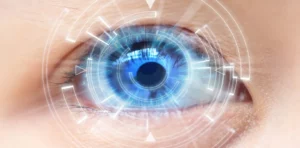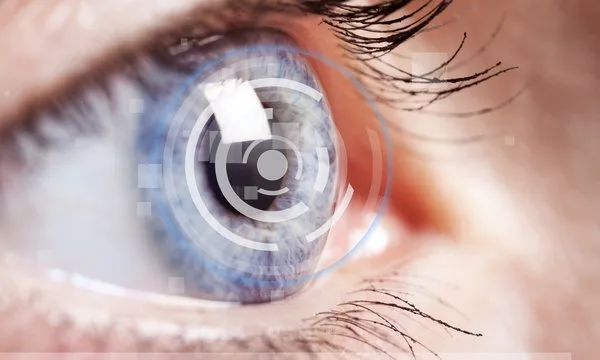Have you ever contemplated a life without glasses or contact lenses? A world where you wake up in the morning, open your eyes, and greet the day with perfect clarity? If so, you’re not alone. Thousands of individuals suffer from vision problems, relying heavily on external aids to navigate their daily life. In a world advancing at lightning speed, medical technology brings us a solution that could change lives dramatically. Welcome to the revolutionary world of Refractive Lens Exchange (RLE).
Contents
- 1 What is Refractive Lens Exchange?
- 2 Who Should Consider Refractive Lens Exchange?
- 3 The Refractive Lens Exchange Procedure
- 4 Refractive Lens Exchange: Pros and Cons
- 5 What are the Side Effects of Refractive Lens Exchange?
- 6 How Long is Recovery from RLE?
- 7 What Does RLE Cost?
- 8 Searching for ‘Refractive Lens Replacement Near Me’?
- 9 Conclusion
What is Refractive Lens Exchange?
 Refractive Lens Exchange, often shortened to RLE, is a ground-breaking eye surgery procedure that has the potential to correct a range of vision problems, freeing you from the constraints of glasses or contact lenses. But how does it work?
Refractive Lens Exchange, often shortened to RLE, is a ground-breaking eye surgery procedure that has the potential to correct a range of vision problems, freeing you from the constraints of glasses or contact lenses. But how does it work?
In essence, RLE replaces the natural lens of your eye with a sophisticated artificial lens. The natural lens of the eye, which is located behind the iris and pupil, focuses light onto the retina at the back of the eye, allowing you to see clearly. However, due to age or other factors, this lens can sometimes fail to work properly, resulting in vision problems. That’s where RLE steps in.
Who Should Consider Refractive Lens Exchange?
Refractive lens exchange (RLE) may seem highly appealing, especially with the benefits we’ve outlined. But is this procedure for everyone? It’s important to understand that while RLE offers a promising solution for vision correction, it’s not necessarily the best choice for every individual. Let’s explore who could be a suitable candidate for this procedure.
RLE can be an excellent choice for those who:
- Have a High Degree of Refractive Error
- Are Presbyopic
- Have Early-Stage Cataracts
- Are Not Suitable Candidates for LASIK or PRK
- Desire a Permanent Solution to Vision Problems
The Refractive Lens Exchange Procedure
 Understanding the actual procedure of Refractive Lens Exchange (RLE) can help you better prepare for this transformative journey. The process, while delicate, is typically straightforward and quick when performed by experienced surgeons. Let’s walk through it step by step.
Understanding the actual procedure of Refractive Lens Exchange (RLE) can help you better prepare for this transformative journey. The process, while delicate, is typically straightforward and quick when performed by experienced surgeons. Let’s walk through it step by step.
- Initial Consultation and Eye Examination
Before the surgery, your eye surgeon will perform a thorough eye examination. This is to ensure that your eyes are healthy enough for the procedure, decide on the best type of intraocular lens (IOL) for you, and discuss any risks, complications, or alternatives.
- Pre-Operative Preparations
On the day of the surgery, you’ll be given some pre-operative instructions. Your eye will be numbed with local anesthesia, so you’ll be awake but won’t feel any pain. Often, a mild sedative is also provided to help you relax.
- The RLE Procedure
The surgeon makes a tiny incision at the edge of your cornea. Using ultrasound technology, the natural lens of your eye is broken up into small pieces and carefully removed through this incision. Once the natural lens has been completely removed, the surgeon will insert the artificial lens, or IOL. The IOL unfolds, filling the empty lens capsule in your eye. The whole procedure typically takes less than 30 minutes.
- Post-Operative Care
After the procedure, you may rest for a while at the clinic before going home. You won’t be able to drive immediately after surgery, so arrange for someone to help you. Your surgeon will provide you with detailed post-operative care instructions. This will likely include using specific eye drops to prevent infection and inflammation and wearing an eye shield or eyeglasses to protect your eye. Regular follow-ups will be scheduled to monitor your recovery and vision improvement.
Refractive Lens Exchange: Pros and Cons
To help you make an informed decision about whether refractive lens exchange (RLE) is right for you, it’s essential to weigh the advantages and disadvantages. Let’s summarize the pros and cons in a straightforward table:
| Pros | Cons |
|---|---|
| 1. Corrects a Range of Vision Problems: RLE can correct severe myopia (nearsightedness), hyperopia (farsightedness), and presbyopia. | 1. Risks and Complications: Like any surgery, RLE comes with potential risks, such as infection, inflammation, or retinal detachment. |
| 2. Permanent Solution: The artificial lens implanted during RLE does not age or degrade, providing a long-term solution to your vision problems. | 2. Cost: RLE is often more expensive than other refractive surgeries like LASIK or PRK, and it might not be covered by insurance. |
| 3. Prevents Cataracts: By replacing your natural lens, RLE prevents the future development of cataracts. | 3. Irreversible: Unlike some other refractive surgeries, RLE is irreversible because your natural lens is removed. |
| 4. Quick Recovery: Most patients recover quickly from RLE, often within a week or two. | 4. Potential for Visual Side Effects: Some patients may experience side effects such as halos, glare, or dry eyes. |
| 5. Suitable for Those Ineligible for LASIK or PRK: RLE can be a great option for those who are not candidates for other refractive surgeries. | 5. Potential Need for Additional Correction: While rare, some patients may still need glasses or contact lenses for certain tasks after RLE. |
What are the Side Effects of Refractive Lens Exchange?
 While Refractive Lens Exchange (RLE) can offer a life-changing solution to your vision problems, it’s important to be aware that, like any surgical procedure, it can have potential side effects. The most common ones are:
While Refractive Lens Exchange (RLE) can offer a life-changing solution to your vision problems, it’s important to be aware that, like any surgical procedure, it can have potential side effects. The most common ones are:
- Temporary Visual Disturbances – In the initial days following the surgery, you might experience blurry vision or see glare, halos, or starbursts around lights. These are usually temporary and improve as your eyes adjust to the new lenses.
- Dry Eyes – Some people may experience dry eyes after the procedure. This can often be managed with lubricating eye drops and usually improves over time.
- Eye Discomfort or Redness – Some discomfort, itching, or mild redness may be present after surgery, but these symptoms should gradually disappear as your eye heals.
- Retinal Detachment – Though rare, there is a slight increased risk of retinal detachment with RLE, particularly in people with high degrees of myopia.
- Posterior Capsule Opacification (PCO) – PCO is a condition where the capsule holding the artificial lens becomes cloudy, causing blurry vision. This can occur months or years after RLE. A quick, painless laser procedure can effectively treat PCO if it develops.
How Long is Recovery from RLE?
Recovering from Refractive Lens Exchange (RLE) is generally a quick process for most patients. Let’s walk through the typical recovery timeline and what you can expect.
- Following the surgery, you may experience blurry vision and some discomfort. These are normal and usually start to improve within a few hours to a few days.
- In the first week following the procedure, you may notice gradual improvements in your vision as your eye begins to adjust to the new intraocular lens (IOL)
- By one to two weeks after the procedure, most people notice significant improvements in their vision.
- Most patients fully recover within one month after RLE, experiencing clear vision and enjoying their daily activities without the need for glasses or contact lenses
What Does RLE Cost?
The cost of Refractive Lens Exchange (RLE) can vary significantly depending on a number of factors, including the surgeon’s experience, the specific type of intraocular lens (IOL) used, and the hospital or clinic’s facilities. It’s crucial to remember that while cost is an important consideration, the quality of care and the surgeon’s expertise should never be compromised.
In Delhi, India, as of the time of writing this article, the approximate cost of RLE ranges from INR 30,000 to INR 1,00,000 per eye. This estimate includes the surgeon’s fees, IOL, and any necessary follow-up visits. However, if you opt for premium lens options such as multifocal or accommodating IOLs, the cost could be higher.
Note that prices can vary, and it is always best to contact a local clinic or hospital for the most accurate and up-to-date information. Your chosen eye care provider will be able to provide a detailed breakdown of the costs associated with your RLE procedure during your consultation.
Searching for ‘Refractive Lens Replacement Near Me’?
 Are you considering undergoing Refractive Lens Exchange (RLE) and wondering where you can find this service near your location? Here are some steps to help you locate near you:
Are you considering undergoing Refractive Lens Exchange (RLE) and wondering where you can find this service near your location? Here are some steps to help you locate near you:
- Finding a Trusted Clinic – When seeking “refractive lens exchange near me,” it’s crucial to find a trusted clinic with experienced surgeons. Look for patient testimonials and reviews, and don’t hesitate to ask for a consultation.
- Seek Recommendations: – Ask for personal recommendations from friends, family members, or colleagues who have undergone refractive surgeries. Their personal experiences can offer invaluable insights.
- Questions to Ask Your Surgeon – A good surgeon will always be open to answering your queries. Ask about their experience, success rates, and what to expect before, during, and after the procedure.
Conclusion
In conclusion, Refractive Lens Exchange (RLE) presents a highly effective and promising solution for those looking to correct severe vision impairments. By understanding what RLE entails, its benefits and potential risks, you can make a well-informed decision about whether it’s the right step for your vision journey.
And if you’re seeking alternative solutions, Lasik surgery is another safe, effective, and popular option for vision correction. It is a safe 10 minute procedure to help you get rid of glasses. EyeMantra offers the most advanced lasik options including PRK, Femto Lasik, SMILE surgery, Standard lasik, ICL and Contoura vision. If you have any questions on Lasik surgery in Delhi, Lasik surgery cost and Lasik procedure, call us at 9711116605 or email at [email protected].



Hello there, just became aware of your blog through Google, and found that it’s really informative.
I’m going to watch out for brussels. I will be grateful if you continue this in future.
Numerous people will be benefited from your writing.
Cheers! Escape roomy lista